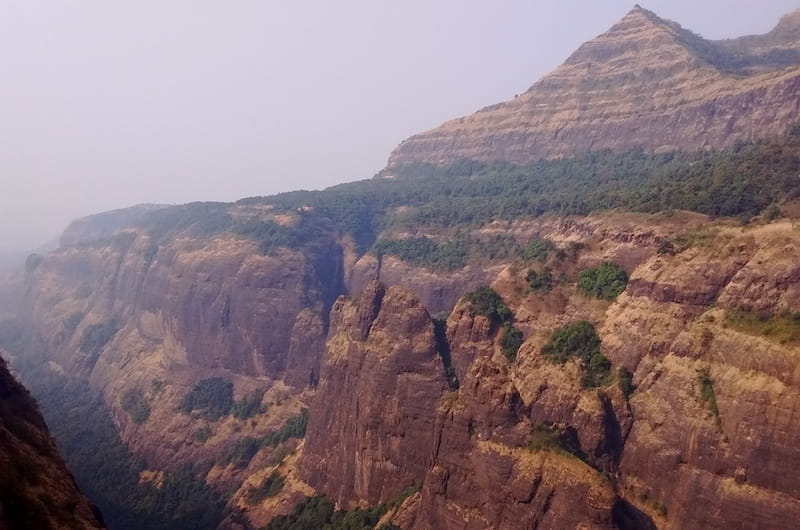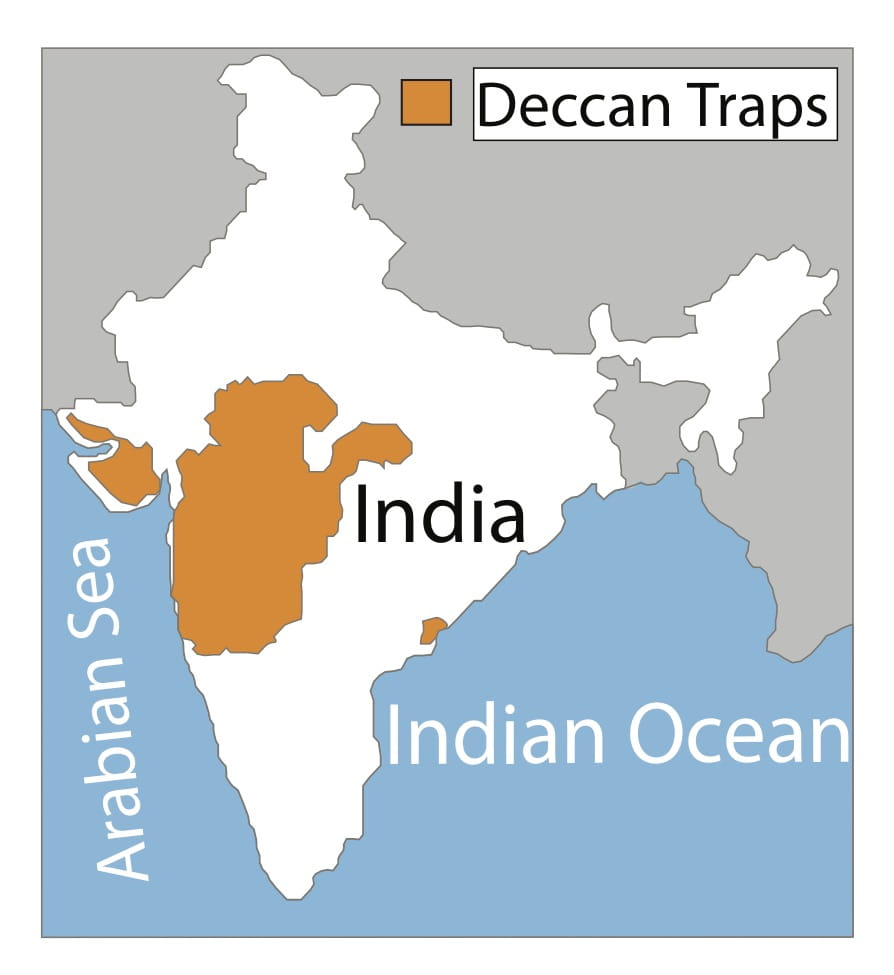Did an Asteroid Cancel Dinosaurs? The Truth is in the Lava
 By Emily Storz
By Emily Storz

- Drexel Selects New, World-Class Life Sciences Building at 3201 Cuthbert Street for Medical Research Operations
- Breakthrough on Gene Therapy for Hereditary Spastic Paraplegia
- Drexel Environmental Collaboratory Releases Cross-Sector Findings on Severe Weather Recovery Challenges
- Drexel Launches the Manuel Stamatakis Center for Alternative Investments at the LeBow College of Business

Layered lava flows from the Bushe and Poladpur Formations near the village of Tail Baila. Image credit, Courtney Sprain.
About sixty-six million years ago a planet-wide catastrophe brought the non-avian dinosaurs to their demise, and the end of the Cretaceous period was marked by a mass extinction of its fauna and flora. New data, published in the journal Science, says it’s possible that intense volcanic eruptions in India coincided with the worldwide extinction – ultimately cementing the fate of the massive reptiles.

“Our previous research presented the hypothesis that a large asteroid impact off the coast of Yucatan could have shaken the Earth globally, which could have disrupted the magmatic systems of volcanoes across the world, causing this transition,” said Loÿc Vanderkluysen, PhD, volcanologist and professor of geoscience in the College of Arts and Sciences at Drexel. However, this hypothesis remained very much untested and controversial, until now.

Vanderkluysen was among the group of researchers, primarily from the University of California, Berkeley, that dated the vast lava flows known as the Deccan Traps in India using radiation measurements. The team was able to date massive lava flows with far greater precision, whittling it down from around a million years to a period of tens of thousands of years.
"We are able to recreate with great precision the order of events at the end of the Cretaceous period," said Vanderkluysen.
“Now that we have dated Deccan Traps lava flows in more and different locations, we see that the transition seems to be the same everywhere. I would say, with pretty high confidence, that the eruptions occurred within 50,000 years, and maybe 30,000 years, of the impact, which means they were synchronous within the margin of error,” said Paul Renne, a professor-in-residence of earth and planetary science at UC Berkeley, director of the Berkeley Geochronology Center and senior author of the study.

The new dates confirm earlier estimates that the lava flows continued for about a million years, but the data shows that three-quarters of the lava erupted after the impact. Previous studies suggested that about 80 percent of the lava erupted before the impact.
The close correlation of the two events, eruptions and extinction – don’t seem to be a coincidence, according to the researchers. “This bolsters the theory that the impact of the asteroid was the main cause,” said Vanderkluysen. “It’s like shaking a bottle of champagne, it can accelerate volcanic activity.”

This study also gleaned improved insights into the period’s climate record. The global climate warming in the years preceding the meteorite can’t be tied to an asteroid. Its likely, that volcanism is what caused this warming – and data from the study shows the climate hadn’t reached its peak intensity. Shell fragments and marine fossils prior to the extinction showed evidence of decline and stress prior to the impact of the meteorite.
“The ecosystem was primed to suffer a mass extinction and volcanism attributed to its weakened state and thwarted recovery,” said Vanderkluysen.
Drexel News is produced by
University Marketing and Communications.